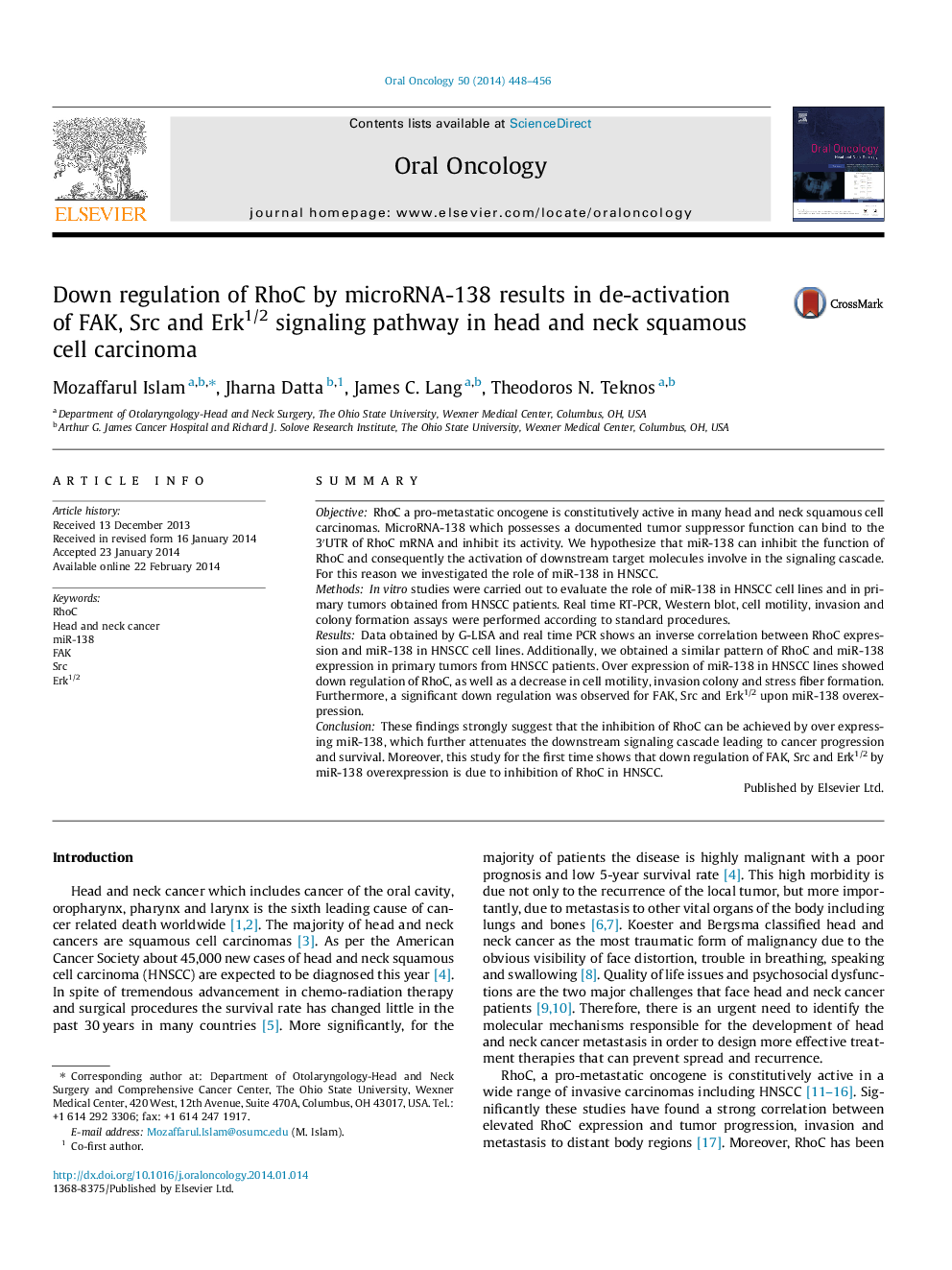| Article ID | Journal | Published Year | Pages | File Type |
|---|---|---|---|---|
| 3164249 | Oral Oncology | 2014 | 9 Pages |
SummaryObjectiveRhoC a pro-metastatic oncogene is constitutively active in many head and neck squamous cell carcinomas. MicroRNA-138 which possesses a documented tumor suppressor function can bind to the 3′UTR of RhoC mRNA and inhibit its activity. We hypothesize that miR-138 can inhibit the function of RhoC and consequently the activation of downstream target molecules involve in the signaling cascade. For this reason we investigated the role of miR-138 in HNSCC.MethodsIn vitro studies were carried out to evaluate the role of miR-138 in HNSCC cell lines and in primary tumors obtained from HNSCC patients. Real time RT-PCR, Western blot, cell motility, invasion and colony formation assays were performed according to standard procedures.ResultsData obtained by G-LISA and real time PCR shows an inverse correlation between RhoC expression and miR-138 in HNSCC cell lines. Additionally, we obtained a similar pattern of RhoC and miR-138 expression in primary tumors from HNSCC patients. Over expression of miR-138 in HNSCC lines showed down regulation of RhoC, as well as a decrease in cell motility, invasion colony and stress fiber formation. Furthermore, a significant down regulation was observed for FAK, Src and Erk1/2 upon miR-138 overexpression.ConclusionThese findings strongly suggest that the inhibition of RhoC can be achieved by over expressing miR-138, which further attenuates the downstream signaling cascade leading to cancer progression and survival. Moreover, this study for the first time shows that down regulation of FAK, Src and Erk1/2 by miR-138 overexpression is due to inhibition of RhoC in HNSCC.
